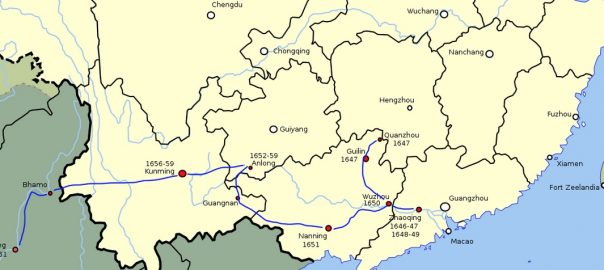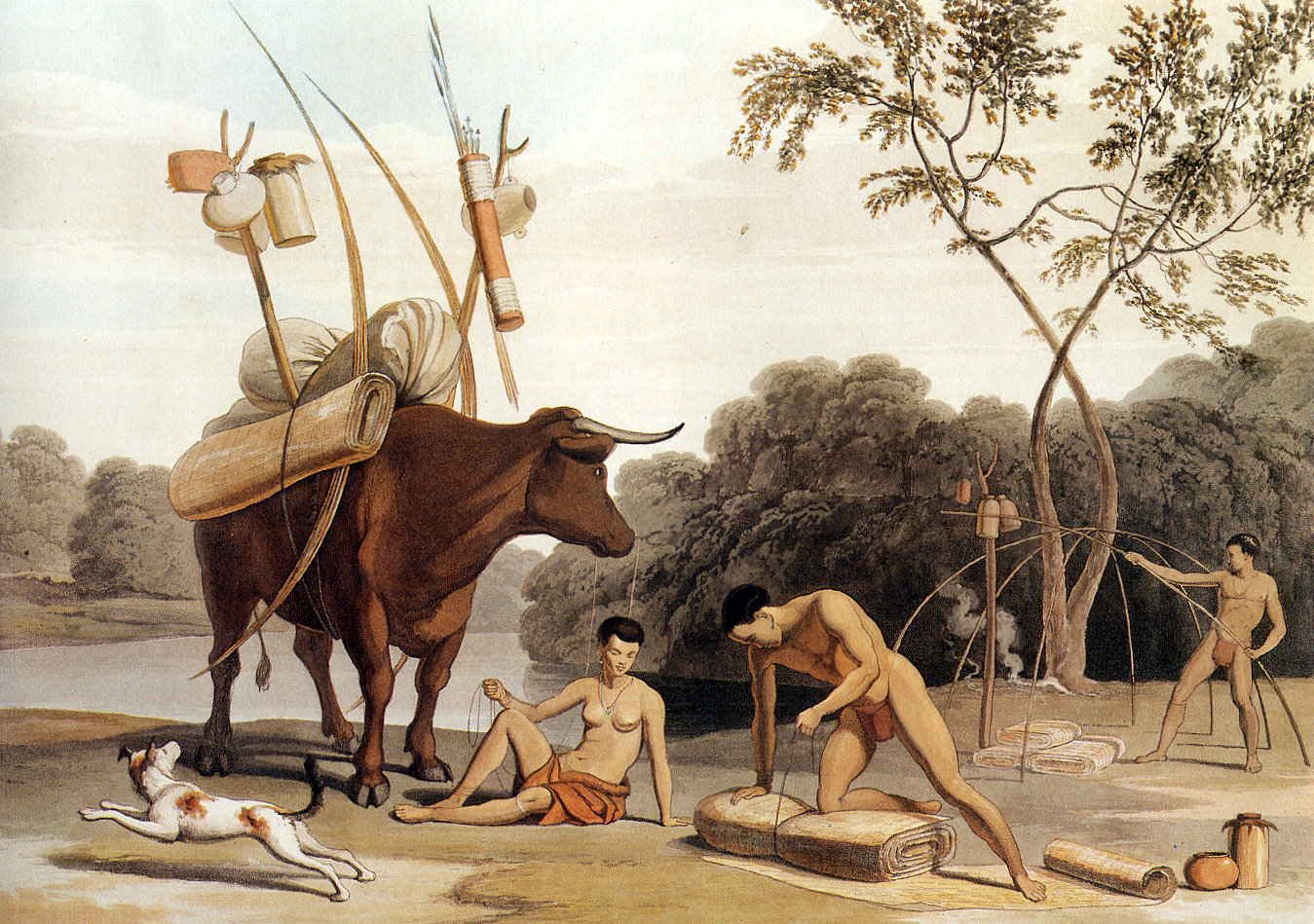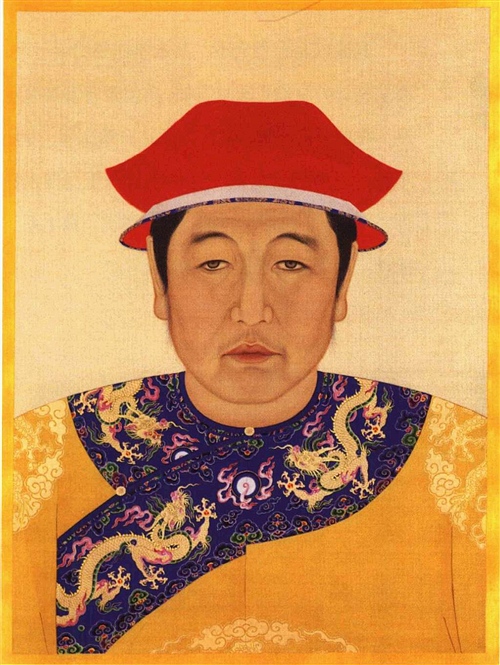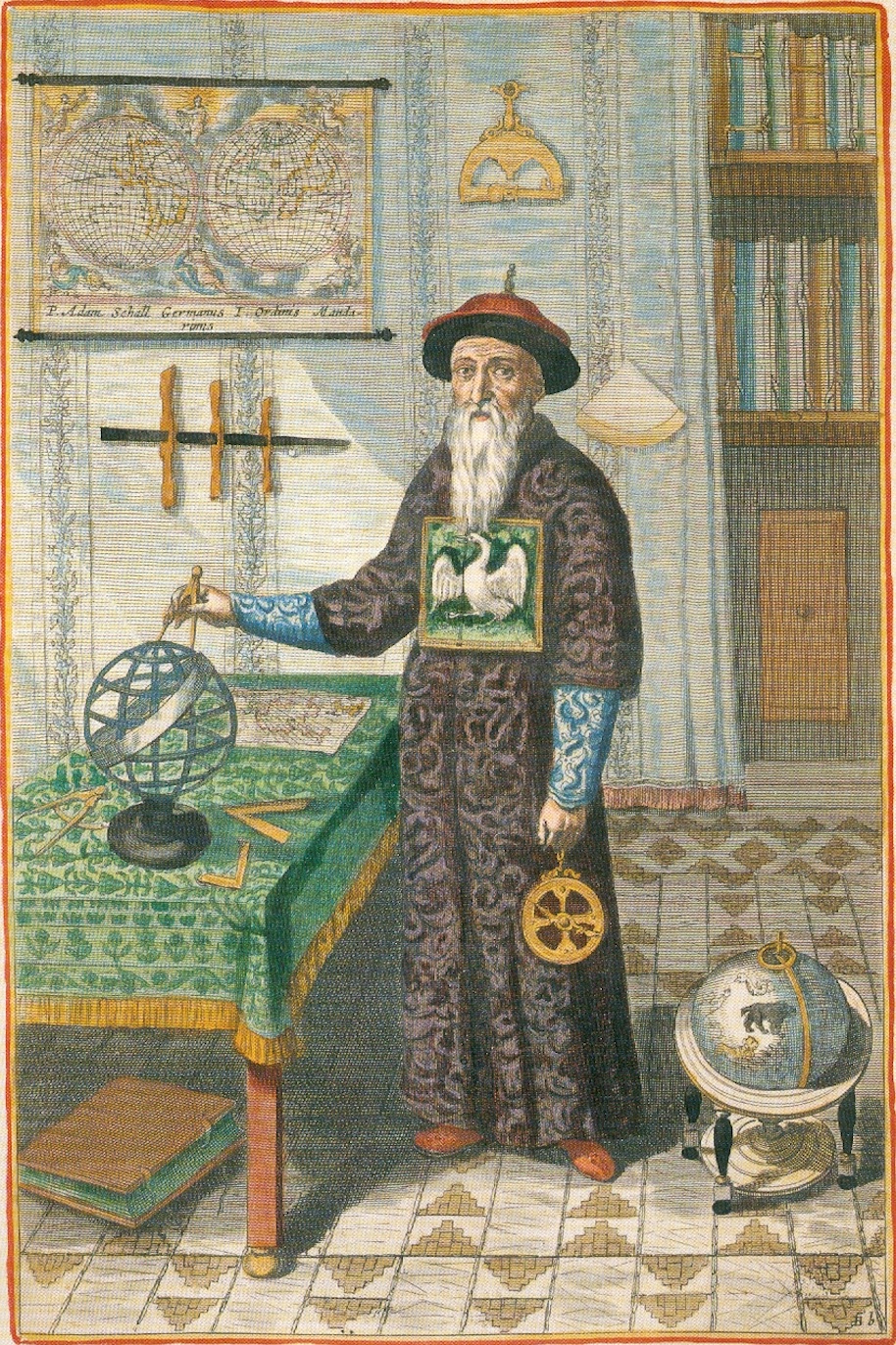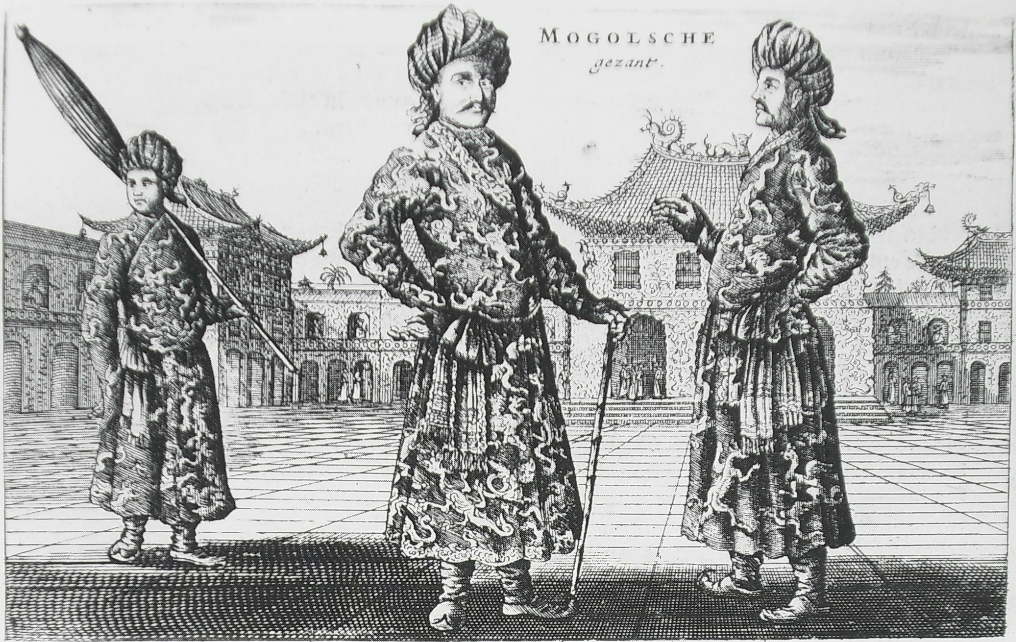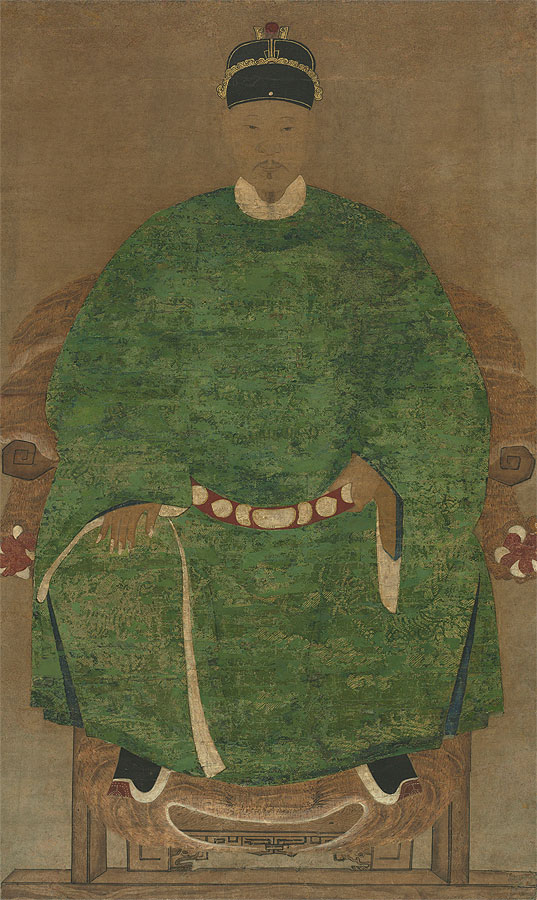It’s been a while since we checked in with developments in China. But in 1659 CE the Qing forces, who had ruled in Beijing since 1644 and had been battling Ming dynasty remnants and allies around southern China ever since, registered a signal victory over one of their allies, Zheng Chenggong, also known as Koxinga. So this year seems like a good opportunity to catch up with what’s been happening with the Qing. But before I do that, let’s quickly look at other news from around the world:
In Dutch-controlled Cape of Good Hope
English-WP tells us that, “In 1659 Doman, a Khoikhoi [indigene] who had worked as a translator for the Dutch and had even traveled to Java, led an armed attempt to expel the Dutch from the Cape peninsula.” The Dutch-VOC had, as you will recall, founded the colony at the Cape of Good Hope back in 1652, with the goal of providing a good place for their fleets sailing between Amsterdam and the East Indies to get reprovisioned, etc.
That page also tells us that Jan van Riebeeck, the VOC founder of the colony,
concluded within two months of the establishment of the Cape settlement that slave labor would be needed for the hardest and dirtiest work. Initially, the VOC considered enslaving men from the indigenous Khoikhoi population, but the idea was rejected on the grounds that such a policy would be both costly and dangerous. Most Khoikhoi had chosen not to labor for the Dutch because of low wages and harsh conditions. In the beginning, the settlers traded with the Khoikhoi but the harsh working conditions and low wages imposed by the Dutch led to a series of wars. The European population remained under 200 during the settlement’s first five years, and war against neighbors numbering more than 20,000 would have been foolhardy. Moreover, the Dutch feared that Khoikhoi people, if enslaved, could always escape into the local community, whereas foreigners would find it much more difficult to elude their “masters.”
Between 1652 and 1657, a number of unsuccessful attempts were made to obtain men from the Dutch East Indies and from Mauritius. In 1658, however, the VOC landed two shiploads of slaves at the Cape, one containing more than 200 people brought from Dahomey (later Benin), the second with almost 200 people, most of them children, captured from a Portuguese slaver off the coast of Angola. Except for a few individuals, these were to be the only slaves ever brought to the Cape from West Africa. From 1658 to the end of the company’s rule, many more slaves were brought regularly to the Cape in various ways, chiefly by Company-sponsored slaving voyages and slaves brought to the Cape by its return fleets. From these sources and by natural growth, the slave population increased from zero in 1652 to about 1,000 by 1700. During the 18th century, the slave population increased dramatically…
It’s definitely worth noting that point about Western settler-colonial entities preferring to bring in enslaved (or indentured) migrant labor rather than rely on the labor of the indigenes because the latter “could always escape into the local community.” That was certainly the case throughout the US South, in the Caribbean, in present-day Palestine, and elsewhere.
But back to the Khoikhoi. WP tells us: “Conflict between Dutch farmers and Khoikhoi broke out once it became clear to the latter that the Dutch were there to stay and that they intended to encroach on the lands of the pastoralists.” Sadly, the rebellion led by Doman in 1659 did not succeed:
The attempt was a failure, although warfare dragged on until an inconclusive peace was established a year later. During the following decade, pressure on the Khoikhoi grew as more of the Dutch became free burghers [that is, settlers], expanded their landholdings, and sought pastureland for their growing herds. War broke out again in 1673 and continued until 1677, when Khoikhoi resistance was destroyed by a combination of superior European weapons and Dutch manipulation of divisions among the local people. Thereafter, Khoikhoi society in the western Cape disintegrated. Some people found jobs as shepherds on European farms; others rejected foreign rule and moved away from the Cape. The final blow for most came in 1713 when a Dutch ship brought smallpox to the Cape. Hitherto unknown locally, the disease ravaged the remaining Khoikhoi, killing 90 percent of the population.
In the Hague
In 1659, England, France, and the Dutch Republic concluded an agreement called “The Concert of The Hague”. English-WP tells us it was for a common stance to be adopted by the three signatories toward the ongoing war between Sweden and Denmark-Norway. The three “Concert” powers agreed that Sweden and Denamark should each abide by the Treaty of Roskilde which they’d concluded the year before– but which Sweden had tried to violate. They also underlined their support for freedom of navigation through the tight entry-point between the Baltic Sea and the North Sea, and in the Baltic, where both England and the Dutch Republic had important trading interests.
WP says that the attempt by the Dutch Grand Pensionary John de Witt to turn the Concert into a formal alliance “was only in part successful, as negotiations with France resulted in a Franco-Dutch alliance in 1662 which became important during the Second Anglo-Dutch War, but negotiations with England did not result in an alliance due to disagreements over the freedom of seas.” This is interesting because it indicates that England and the Netherlands, having a broad range of conflicting interests throughout their empires were as a result less likely to seek peace at home than either was with the French, with whom there was (as yet) no such global-imperial competition.
“New Spain” founds new settler city at today’s Ciudad Juárez/ El Paso
English-WP tells us this about this development:
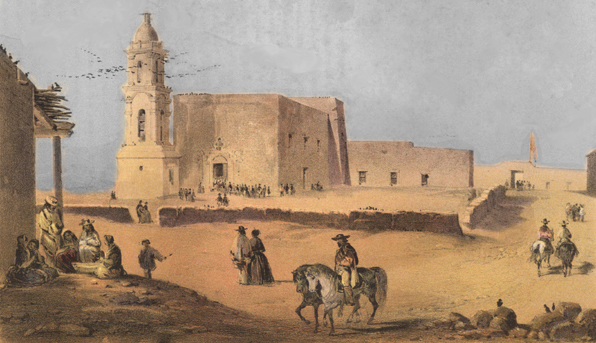
As 17th century Spanish explorers sought a route through the southern Rocky Mountains, the Franciscan Friar García de San Francisco founded Ciudad Juárez in 1659 as “El Paso del Norte” (“The North Pass”). The Misión de Guadalupe de los Mansos en el Paso del río del Norte became the first permanent Spanish development in the area in the 1660s, although Native American peoples were already present. The Franciscan friars established a community that grew in importance as commerce between Santa Fe and Chihuahua passed through it. The original population of Mansos, Suma, Jumano, and other natives from the south brought by the Spanish from Central New Spain grew around the mission.
Qing dynasty defeats a key opponent
I haven’t written much at all about what’s been going on in recent years in the massive land-based empire of China, where the Manchu-origined Qing dynasty seized control of Beijing in 1644. Since then, its leaders and officials have been working hard (I assume) to consolidate their control over as much as possible of the terrain ruled by their Ming-dynasty predecessors.
As you may recall, shortly before the Qing entered Beijing, their wily and very competent leader Hong Taiji had died. At that point the Deliberative Council of Princes and Ministers, which was the Manchus’ main policymaking body until the 1720s, deliberated and agreed that Hong’s son Fulin, born in 1638, should be the Emperor and that a “Council of Regents” that would run things until he grew up could unite all the different branches of the family. Fulin was duly enthroned as “the Shunzhi Emperor”, while his uncle Dorgon speedily amassed the main reins of power and exercised effective control as the chief regent.
English-WP tells us that Dorgon was killed in a hunting accident in December 1650. There followed a swift struggle among the various pro- and anti-Dorgon factions in the royal household, at the end of which, on February 1, 1651, a powerful uncle of young Fulin called Jirgalang announced that henceforth the Shunzhi Emperor would assume full imperial authority. Jirgalang also moved swiftly to strip Dorgon of all the many honors bestowed on him and to purge the bureaucracy and the officer corps of his supporters.
This section of the WP page on the Shunzhi Emperor is interesting. It tells us among other things that,
Eunuchs had been kept under tight control during Dorgon’s regency, but the young emperor used them to counter the influence of other power centers such as his mother the Empress Dowager and former regent Jirgalang. By the late 1650s eunuch power became formidable again: they handled key financial and political matters, offered advice on official appointments, and even composed edicts. Because eunuchs isolated the monarch from the bureaucracy, Manchu and Chinese officials feared a return to the abuses of eunuch power that had plagued the late Ming…
WP also tells us this about the young emperor:
The Shunzhi Emperor was an open-minded emperor and relied on the advice of Johann Adam Schall von Bell, a Jesuit missionary from Cologne, …for guidance on matters ranging from astronomy and technology to religion and government. In late 1644, Dorgon had put Schall in charge of preparing a new calendar because his eclipse predictions had proven more reliable than those of the official astronomer. After Dorgon’s death Schall developed a personal relationship with the young emperor, who called him “grandfather” (mafa in Manchu). At the height of his influence in 1656 and 1657, Schall reports that the Shunzhi Emperor often visited his house and talked to him late into the night. He was excused from prostrating himself in the presence of the emperor, was granted land to build a church in Beijing, and was even given imperial permission to adopt a son (because Fulin worried that Schall did not have an heir), but the Jesuits’ hope of converting the Qing sovereign to Christianity was crushed when the Shunzhi Emperor became a devout follower of Chan Buddhism in 1657.
But enough about domestic affairs. How about foreign policy?
In 1646, when Qing armies led by Bolo had entered the city of Fuzhou, they had found envoys from the Ryūkyū Kingdom, Annam, and the Spanish in Manila. These tributary embassies that had come to see the now fallen Longwu Emperor of the Southern Ming were forwarded to Beijing, and eventually sent home with instructions about submitting to the Qing…
Also in 1646 sultan Abu al-Muhammad Haiji Khan, a Moghul prince who ruled Turfan, had sent an embassy requesting the resumption of trade with China, which had been interrupted by the fall of the Ming dynasty. The mission was sent without solicitation, but the Qing agreed to receive it, allowing it to conduct tribute trade in Beijing and Lanzhou (Gansu). But this agreement was interrupted by a Muslim rebellion that engulfed the northwest in 1646.
Then this:
In 1651 the young emperor invited to Beijing the Fifth Dalai Lama, the leader of the Yellow Hat Sect of Tibetan Buddhism, who, with the military help of Khoshot Mongol Gushri Khan, had recently unified religious and secular rule in Tibet. Qing emperors had been patrons of Tibetan Buddhism since at least 1621 under the reign of Nurhaci, but there were also political reasons behind the invitation. Namely, Tibet was becoming a powerful polity west of the Qing, and the Dalai Lama held influence over Mongol tribes, many of which had not submitted to the Qing. To prepare for the arrival of this “living Buddha,” the Shunzhi Emperor ordered the building of the White Dagoba (baita 白塔) on an island on one of the imperial lakes northwest of the Forbidden City, at the former site of Qubilai Khan’s palace. After more invitations and diplomatic exchanges to decide where the Tibetan leader would meet the Qing emperor, the Dalai Lama arrived in Beijing in January 1653…
There had also been a series of battles in the north, between the Qing military and the now-arriving Russians. WP tells us that, “Sino-Russian border conflicts would continue until 1689, when the signature of the Treaty of Nerchinsk fixed the borders between Russia and the Qing.”
But what, meanwhile, of the Qings’ multi-year struggle against the remnants of the Ming?
The Ming had fallen into huge disarray after the Qing and various peasant bands had taken Beijing in 1644. At that point, the last actual Ming Emperor, the Chongzhen Emperor had killed himself, following which a succession of distant cousins had tried to rally pro-Ming sentiment in the south. The one who was in charge of this movement in the late 1650s was called the Yongli Emperor, and by 1659 he was getting chased by the Qing ever further toward and then into today’s Myanmar. (See the map of his multi-year flight in the banner image above.)
One of the Yongli’s allies was a powerful pirate and military man called Zheng Chenggong (“Koxinga”) who was actually the son of the even more powerful pirate and military man Zheng Zhilong, whom we’ve encountered several times before as he engaged with, and on occasion against, both the Portuguese and the Dutch in the waters along China’s lengthy coast. Zheng Zhilong had worked first of all with the Ming, but then he did a deal with the Qing that was one of the keys to their victory in 1644. Now, his son was one of the main anti-Qing forces.
On the Shunzhi Emperor page on WP we learn that this happened in 1659:
just as the Shunzhi Emperor was preparing to hold a special examination to celebrate the glories of his reign and the success of the southwestern campaigns, Zheng sailed up the Yangtze River with a well-armed fleet, took several cities from Qing hands, and went so far as to threaten Nanjing. When the emperor heard of this sudden attack he is said to have slashed his throne with a sword in anger. But the siege of Nanjing was relieved and Zheng Chenggong repelled, forcing Zheng to take refuge in the southeastern coastal province of Fujian. Pressured by Qing fleets, Zheng fled to Taiwan in April 1661…
While he was in Taiwan he would lead a rebellion against the Dutch there. But we’ll have to await that news…
